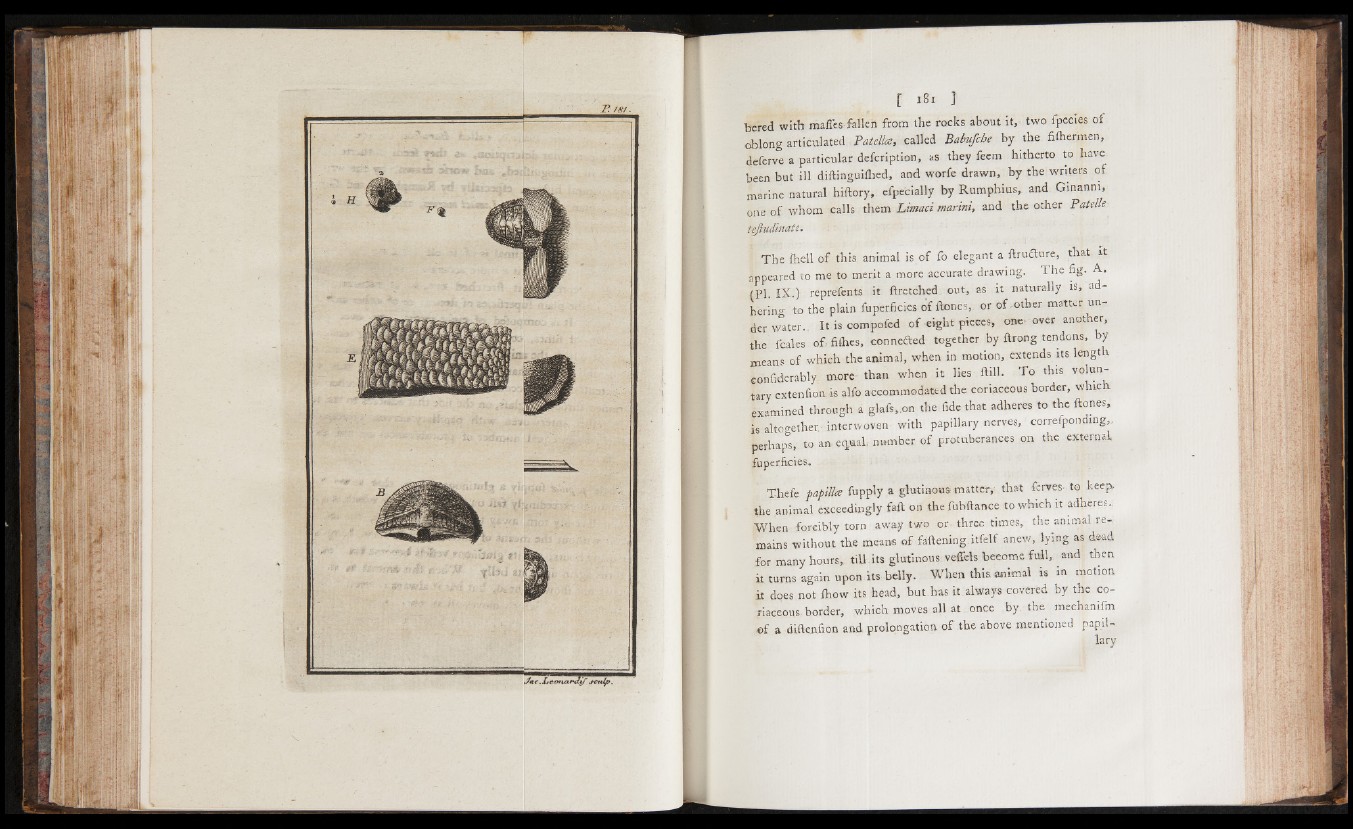
bered with maffes fallen from the rocks about it,- two fpecies o f
oblong articulated Patella:, called Babufcbe by the fiihermen,
deferve a particular defcription, as they feem hitherto to have
been but ill diftinguiilied, and worfe drawn, by the writers of
marine natural hiftory, efpecially by Rumphius,. and Ginanni,
one o f whom calls them Limaci marini, and the other Patelle
tejludinate.
The fhell o f this, animal is o f fo elegant a ftrutture, that It
appeared to me to merit a more accurate drawing. T he fig. A .
(PL IX.) reprefents it ftretched out, as it naturally is, adhering
to the plain fuperficies of ftones,. or of-other matter under
water., I t i s compofed of eight pieces, one over another,
the fcales of> fifties, con netted together by ftrong tendons, y
means of which the animal, when in motion, extends its length
confiderably. more than when it lies ftill. T o this voluntary
extenfionis alfo accommodated the coriaceous border, which,
examined through a gkfs,.on the fide that adheres to the ftones,
is altoo-ether interwoven with papillary nerves, correfponding,,
perhaps, to an ecpiaL number o f protuberances on the external
fuperficies.
Thefe papilla fupply a glutinous matter, that ferves- to keep,
the animal exceedingly faft on the fubftance to which it adheres.:
When forcibly torn away two or three times, the animal remains
without the means o f fattening itfelf anew, lying as dead
for many hours, tiU its glutinous: veffels beeome full, and then
it turns again upon its belly. When this animal is in motion
it does not ihow its head, but has it always covered by the coriaceous
border, which moves all at once by. the mechamfm
©f a diftenfion and prolongation o f the above mentioned papil